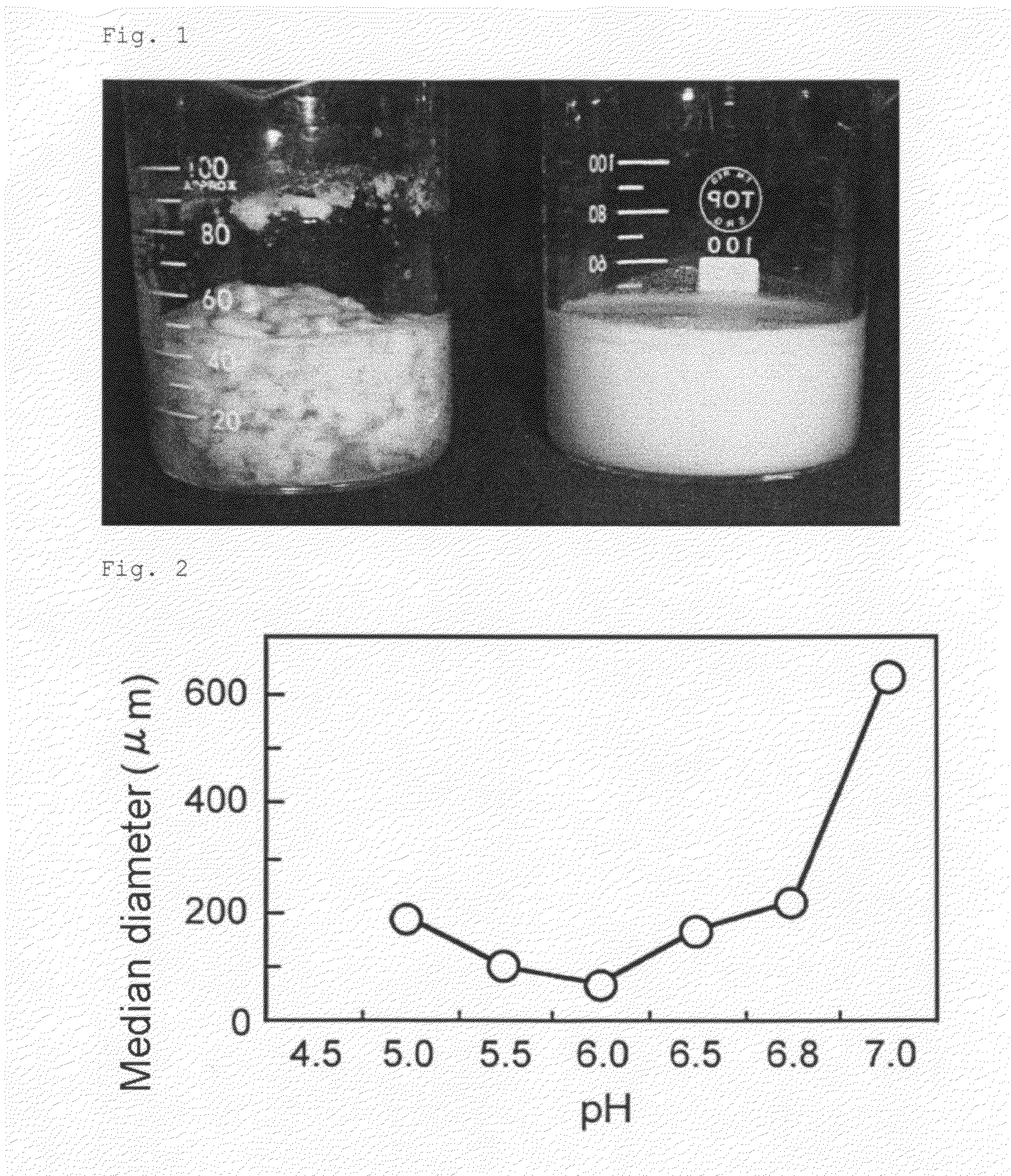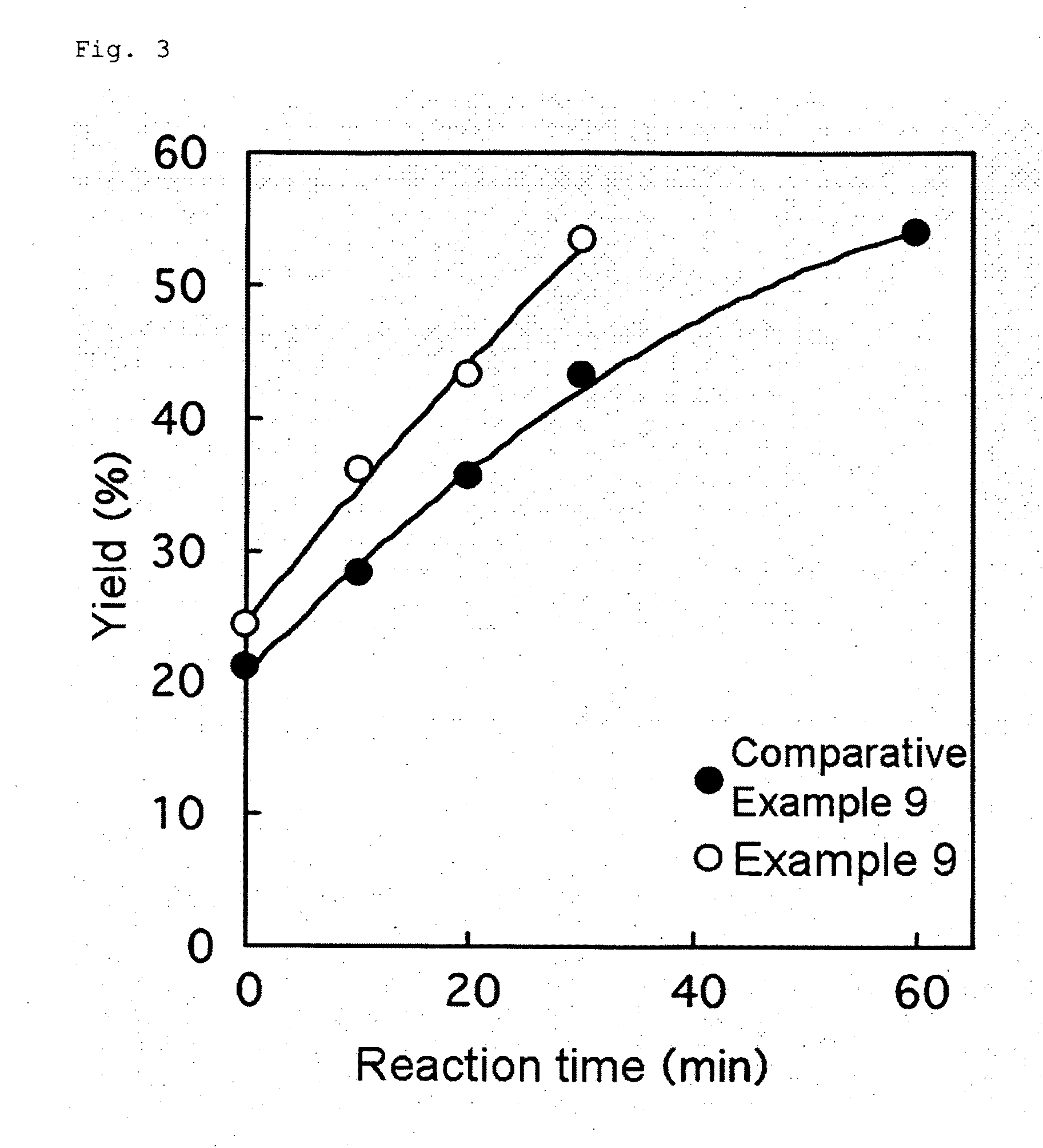Dispersion improver for gluten, and dispersion solution of gluten
- Summary
- Abstract
- Description
- Claims
- Application Information
AI Technical Summary
Benefits of technology
Problems solved by technology
Method used
Image
Examples
example 1
Water-Soluble Soybean Polysaccharide-Containing Active Gluten
[0066]To 3.5 kg of distilled water containing 0.06% by weight of water-soluble soybean polysaccharide (“SOYAFIVE-S” manufactured by Fuji Oil Co., Ltd., average molecular weight: 550,000, content of galacturonic acid: 18.2 parts by weight), 1.5 kg of fresh gluten (moisture content: 67% by weight) prepared from a wheat flour was added, followed by uniformly dispersing it with Homo Disper (Tokushu Kika Kogyo Co., Ltd.). Gluten was well dispersed and the resultant dispersion solution had low viscosity. Next, the dispersion solution was supplied to a spray dryer while stirring to obtain active gluten.
example 2
[0067]Active gluten was obtained under the same conditions as in Example 1, except that pectin derived from potato was used in place of the water-soluble soybean polysaccharide. Pectin derived from potato was prepared in accordance with Example 2 of Patent Document WO 2000 / 43424 (average molecular weight: 180,000, content of galacturonic acid: 38.5% by weight). Similarly, gluten was well dispersed and the resultant dispersion solution had low viscosity.
example 3
[0068]Active gluten was obtained under the same conditions as in Example 1, except that pectin derived from citrus (average molecular weight: 250,000, content of galacturonic acid: 80.3% by weight, esterification degree: 67%) was used in place of the water-soluble soybean polysaccharide. Similarly, gluten was well dispersed and the resultant dispersion solution had low viscosity.
PUM
| Property | Measurement | Unit |
|---|---|---|
| Percent by mass | aaaaa | aaaaa |
| Percent by mass | aaaaa | aaaaa |
| Weight | aaaaa | aaaaa |
Abstract
Description
Claims
Application Information
 Login to View More
Login to View More - R&D
- Intellectual Property
- Life Sciences
- Materials
- Tech Scout
- Unparalleled Data Quality
- Higher Quality Content
- 60% Fewer Hallucinations
Browse by: Latest US Patents, China's latest patents, Technical Efficacy Thesaurus, Application Domain, Technology Topic, Popular Technical Reports.
© 2025 PatSnap. All rights reserved.Legal|Privacy policy|Modern Slavery Act Transparency Statement|Sitemap|About US| Contact US: help@patsnap.com


